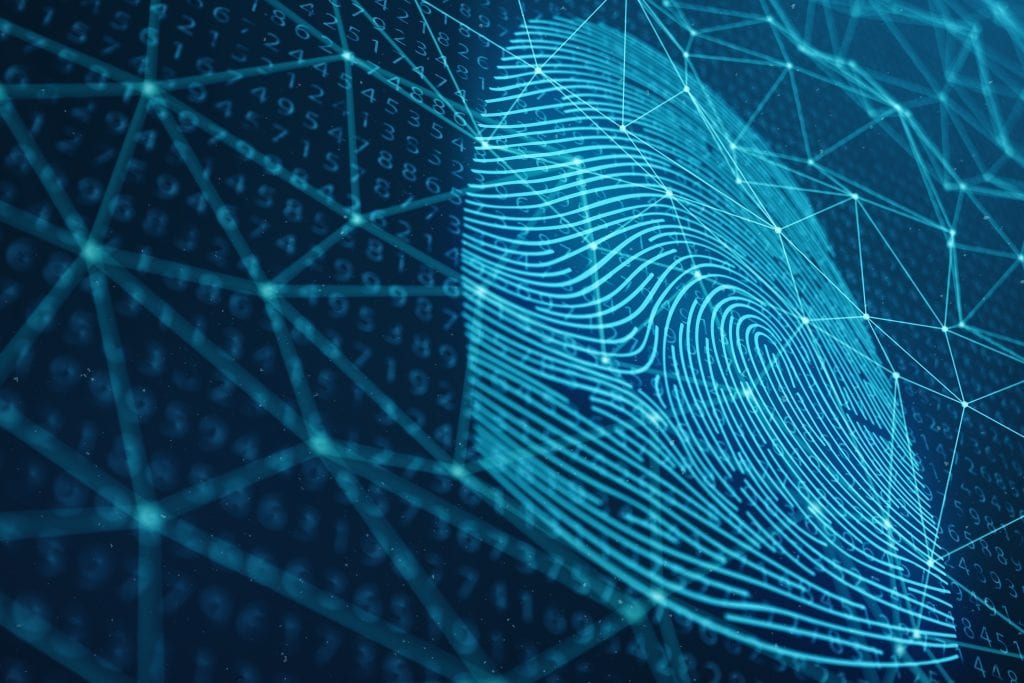Fraud has reached epidemic levels, prompting merchants and payments companies to prioritize its reduction. Since biometric identification can help mitigate fraud costs, U.S. consumers are one step closer to scanning their face or fingerprint at the point of sale.
In a new report, Are Consumers “Buying” Biometric Identification?, Christopher Miller, Emerging Payments Lead Analyst, and James Wester, Co-Head of Payments at Javelin Strategy & Research, examine the inevitable emergence of biometric authentication and the ramifications for merchants, processors, and consumers.
Swimming Upstream
After Amazon’s launch of Pay by Palm at its Whole Foods stores fizzled, there was speculation that consumers weren’t ready—and might never be ready—for biometric identification in retail establishments. However, the issue may have been more related to the verification method than to biometric authentication opposition.
“According to Javelin’s data, the most widely used methods of biometric identification are fingerprint and facial recognition; pay by palm is in a very distant fourth place,” Miller said. “Amazon was attempting to train consumers on a new biometric method that’s not in harmony with what they use with their devices every day. They were swimming upstream.”
Consumers primarily encounter biometrics through their phones, so their preferred method of biometric authentication is largely determined by their mobile operating system. Android users are generally more comfortable with fingerprint scans, while Apple users are more comfortable with facial recognition.
Merchants and payment system companies must acknowledge these differences and design their systems to account for them.
A Two-Tiered Experience
Unfortunately, the divide in preferred biometric method makes it costly for merchants to implement hardware solutions like facial scanners at the point of sale. Merchants will likely rely on the devices that most consumers already carry with them: their mobile phone.
It means retailers and payment companies will continue to push for widespread adoption of mobile wallets, and there could be implications for consumers who refuse to adopt the new technology.
“Around 15 years ago, the Illinois toll road system shifted from cash payments to automated tolling through transponders in a person’s car,” Miller said. “You can still pay cash now, but you will literally pay twice as much for that privilege. Similarly, a two-tiered experience could emerge at the point of sale. People who don’t want to use biometric authentication might not get charged double, but their experience will be degraded to the point that it will be inconvenient.”
Some consumers are reluctant to adopt biometrics due to privacy concerns or because they don’t have a device that supports it. These customers’ transactions will increasingly be considered high-risk by payment companies, prompting additional verification steps.
For example, retailers could require customers to verify information through their bank’s app or respond to text messages from their credit card company to authorize purchases. This recurring inconvenience will likely spur many reticent consumers to adopt digital wallets.
The Adoption Loop
Though biometric authentication may be inevitable, merchants shouldn’t rush to mandate an overarching shift in authentication methods. A better solution is to make biometric authentication available, offer options consumers are comfortable with, and tighten requirements over time.
Businesses must also consider customer preferences. Biometric adoption is roughly equal across age groups until it drops off dramatically at age 65. Therefore, a merchant with an older clientele should be more cautious than a mainstream retailer when rolling out new identity verification methods.
“On the flip side, companies have been delivering paper statements for as long as 25 years,” Miller said. “In the early 2000s, many companies were happy to give consumers $10 to $25 to opt into paperless billing. Only now are they trying to close the loop and drive consumers into compliance. When it comes to biometric authentication, companies shouldn’t let the adoption loop linger that long.”
Though organizations will have to offer customers incentives to switch to biometric authentication, those benefits shouldn’t be monetary. The goal is to mitigate fraud costs, so it defeats the purpose if organizations spend to sway consumers to biometric authentication.
Incentivizing Biometrics
The reality is that almost all the benefits from biometric authentication deployment accrue to organizations in the form of fraud reduction, cost reduction, and better approval rates. There are minimal benefits to consumers, and there will likely be increased friction as customers resist the shift from the status quo.
To speed adoption, organizations will have to design systems that create a positive customer experience and give consumers an incentive to use them. Because biometric authentication is imminent, companies should start planning their solutions soon.
“The most important thing to know is this is happening,” Miller said. “Within the next one to three years it will be commonplace, perhaps even the norm, for U.S. transactions both online and in-store to involve some form of biometric authentication. That doesn’t mean companies have to shift immediately. Just make it available and give your customers a reason to switch.”
